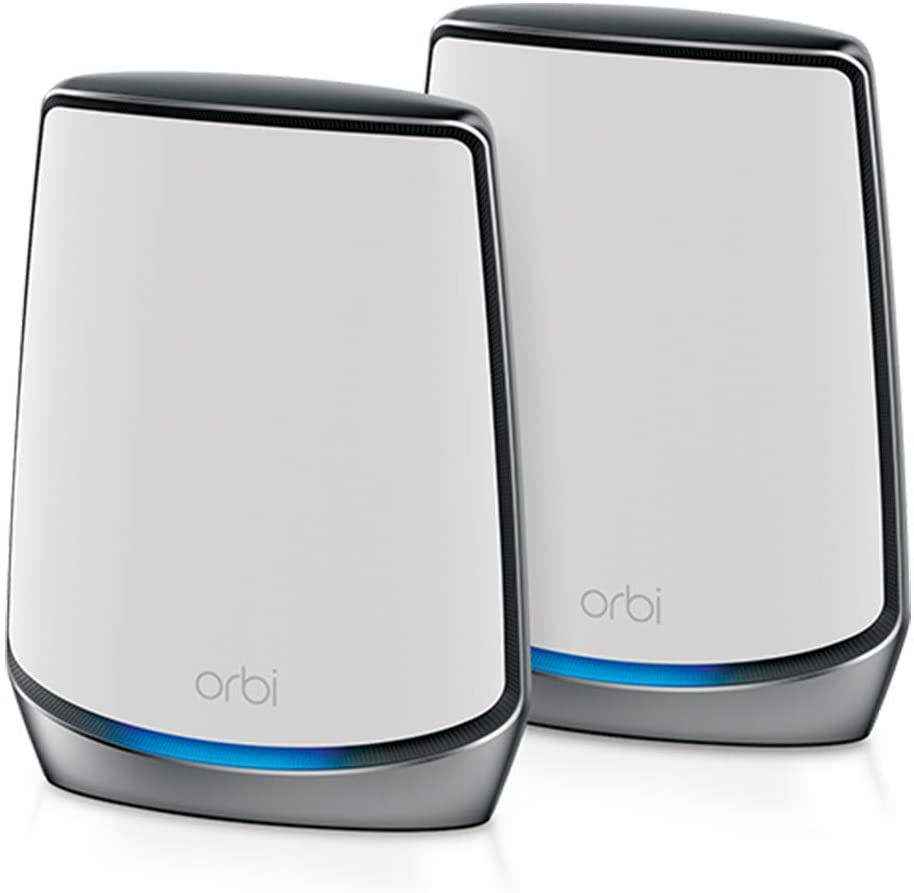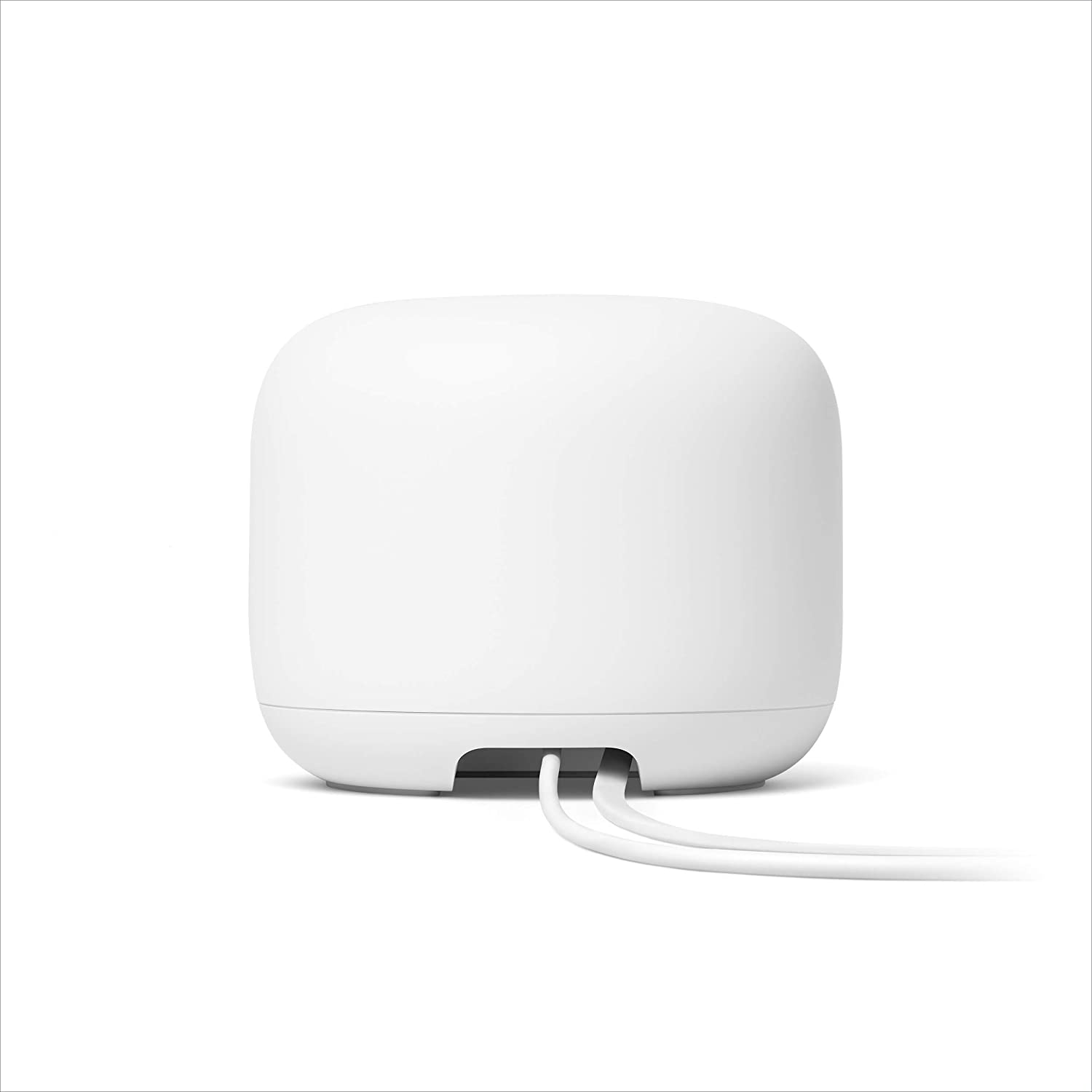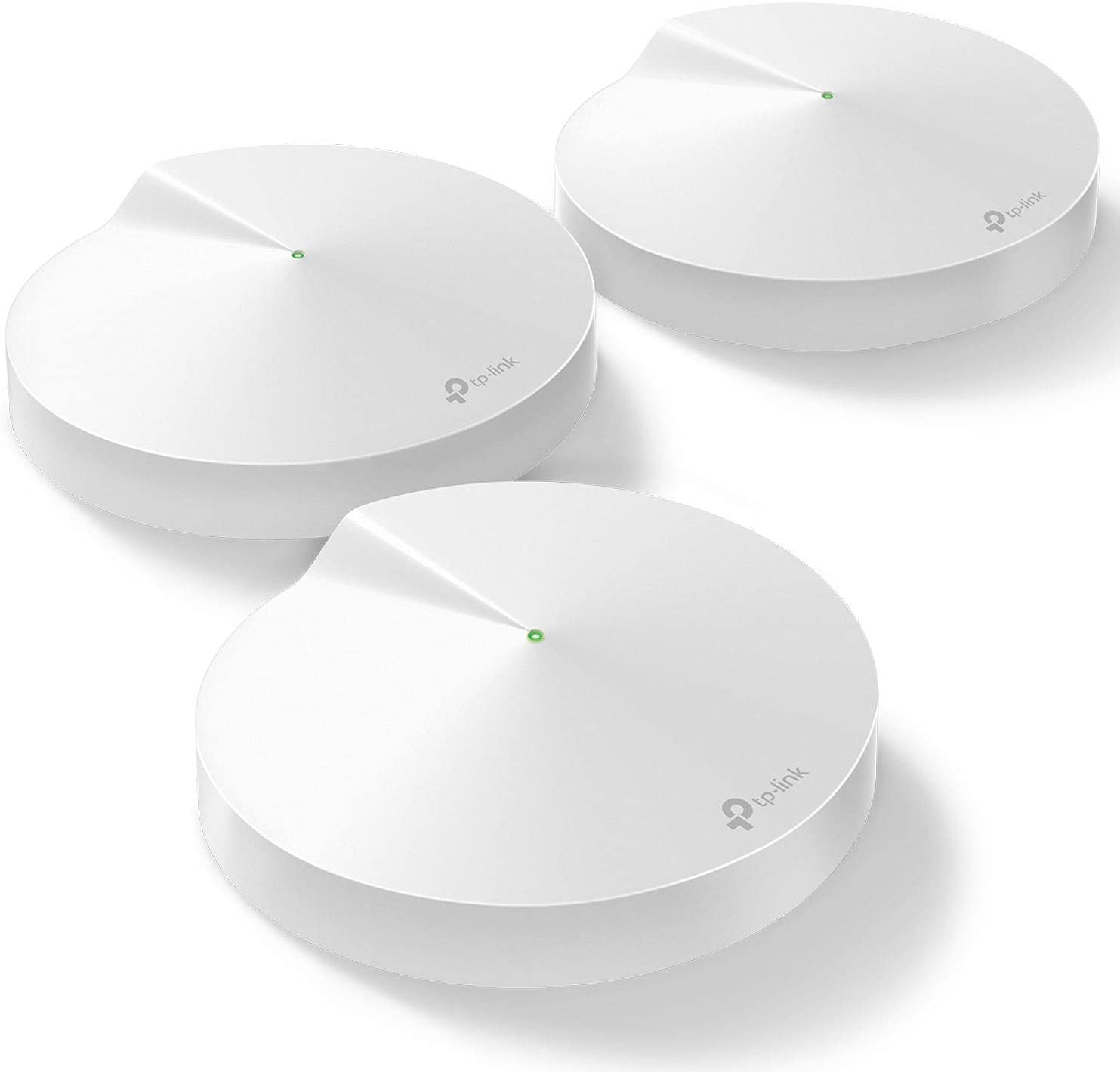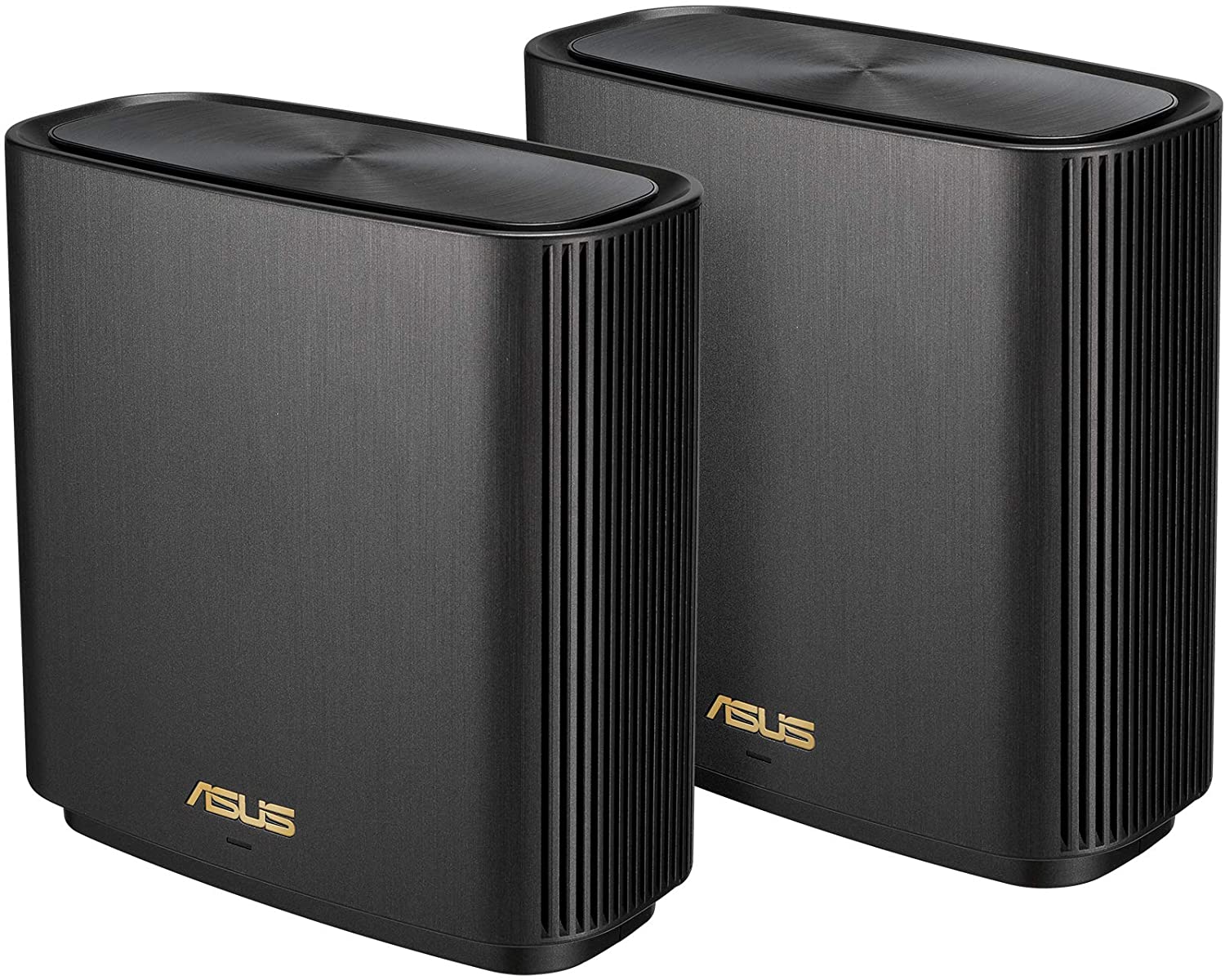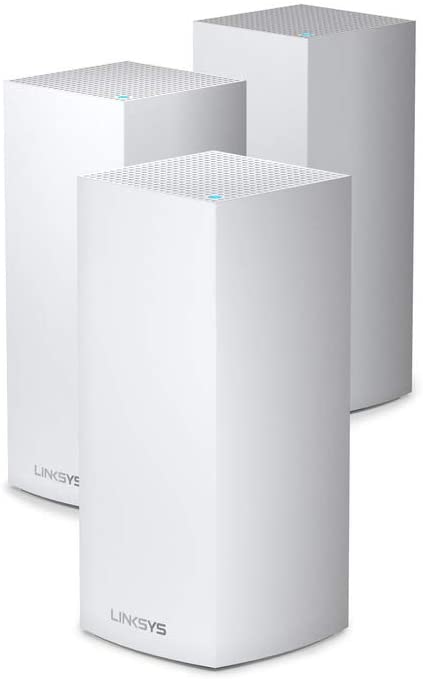The Best Mesh Wi-Fi System for Your Money
Everyone wants the fastest internet possible in their homes, with no dead spots. Mesh Wi-Fi systems, also known as whole home Wi-Fi systems, mesh systems or simply mesh routers, can significantly improve network coverage around a house by eliminating dead zones, providing uninterrupted WiFi throughout your home. A mesh system joins two or more Wi-Fi access points — usually one base router with multiple satellite modules or nodes — to create and share a seamless Wi-Fi network
Unlike traditional routers, which are typically placed in one room near the modem and have limited reach, mesh systems are designed to provide a wider signal range. Because they consist of a series of satellite modules, they can cover every room in the house with ease, even those corners that typically don’t receive Wi-Fi signal (dead spots). This makes them a great option for large and multi-story homes.
In a way, a mesh router system is like having a router with multiple Wi-Fi extenders around the house, with one key difference: it shares the same password and network ID. A Wi-Fi range extender, on the other hand, requires a separate network. This ultimately means a mesh router system provides a more streamlined, hassle-free connection since you’ll always be on the same network even as you move from room to room, rather than having to manually reconnect to another network, as is typically the case with Wi-Fi extenders.
Mesh Wi-Fi system buying guide
Most mesh Wi-Fi systems cost about the same as premium routers, typically somewhere between $200 and $700, depending on the type of Wi-Fi technology supported and the number of mesh nodes included.
Here are some factors to consider when shopping for the best mesh Wi-Fi system for your home:
• Mesh units. Most mesh systems include either two or three nodes you can place around the home. Some are scalable as well, meaning you can buy extra nodes and add them to your network as needed.
The coverage area listed in the product description will give you an idea of how many square feet a particular mesh system can cover. But to determine how many units you need, you should consider not only the size of your home, but also whether there are physical obstructions such as brick and concrete walls, and/or interference from other devices.
• Wi-Fi 6 vs. Wi-Fi 5. Mesh routers use either Wi-Fi 5 (802.11ac) or Wi-Fi 6 (802.11ax). The name of the system itself will tell you what type it uses. Those that include “AC” use Wi-Fi 5, while those with “AX” use the newer and more advanced Wi-Fi 6.
Wi-Fi 5 is powerful enough for most users. However, the latest Wi-Fi 6 technology boasts some upgrades such as faster speeds, less network congestion and better overall range.
Do note that most devices aren’t Wi-Fi 6 enabled yet. This doesn’t mean that a Wi-Fi 6 mesh system won’t be able to connect to your current devices. It will, but you probably won't be able to take advantage of their improved technology, nor will your devices show a huge improvement in performance or speed.
• Dual band vs. tri-band. Like standard routers, mesh systems use frequency bands to distribute signals to your devices. Most models come with dual-band or tri-band configurations.
Dual-band mesh routers typically support Wi-Fi 5 technology and, as the name suggests, use two frequency bands: 2.4GHz and 5GHz.
Many Wi-Fi 6 mesh systems use tri-band. They have the two frequency bands included in dual-band routers, plus an additional 5GHz band that’s often used as a dedicated band for “backhaul” — that is, communication between satellite nodes. These tri-band systems tend to offer faster speeds and are especially recommended for smart homes because they can handle multiple devices more efficiently.
• Speed. Although internet speed greatly depends on the type of service package you have and other external factors (e.g. the type of usage, or the number of people connecting at the same time), it can also be impacted by the mesh system’s bandwidth.
Product descriptions give an idea of the system’s capabilities in terms of speed. This is often listed in megabytes per second (Mbps) or after the abbreviations AX or AC, which refer to Wi-Fi 6 and Wi-Fi 5, respectively. For instance, the AX6000 in the Netgear Orbi AX6000 lets you know that it can maintain a combined speed of up to 6,000Mbps, or the equivalent of 6Gbps. Keep in mind that every 1,000Mbps equals 1Gbps.
• Ports. Most mesh Wi-Fi systems have two types of ethernet ports on the back of each node: wide area network ports (WAN ports) and local area network ports (LAN ports).
WAN ports are used to connect to the DSL modem. LAN ports, on the other hand, can be used to connect any local devices, such as laptops, game consoles and smart TVs. These are very useful for devices that don’t have a Wi-Fi connection, as well.
Some mesh systems may only have these ports in a primary node; others include ports in the satellites as well. They may also include USB ports, which can be used with other devices, such as a printer.
Because connecting your devices to an ethernet port gives you a faster connection, we recommend that you get a mesh system with multiple ports on each satellite node.
Best mesh Wi-Fi system
1. Best overall: Netgear Orbi AX6000 (RBK852) Mesh Wi-Fi 6 System
Wi-Fi: Tri-Band 802.11ax (Wi-Fi 6) | Coverage: up to 5,000 sq. ft. | Mesh nodes: 2 | Wireless speed: 6,000Mbps/6Gbps (combined) | Ports per node: 4 Gigabit LAN, 1 Gigabit WAN (router only)
If you want the most reliable and fastest system money can buy right now, take a look at Netgear’s top-of-the-line mesh router, the Orbi AX6000.
This two-piece model features the latest Wi-Fi 6 technology with a tri-band system to deliver a maximum wireless speed of up to 6Gbps. A third 5GHz frequency band dedicated specifically to communication between the nodes (backhaul) helps keep the system operating at top speed throughout the entire house.
The Orbi AX6000 comes with a primary router and a satellite node that cover up to 5,000 square feet. If you need a broader coverage area, you can add up to three nodes for a total coverage of 10,000 square feet, though that costs an extra $600, roughly.
The main router, which connects directly to the modem, is equipped with a 2.5Gbps multi-gig WAN port and four Ethernet LAN ports, whereas the nodes include four LAN ports.
The Orbi AX6000 main drawback is its steep price. For about $700, it’s one of the most expensive mesh routers in the market. For most people, this may be an unnecessary expense, considering most devices don’t support Wi-Fi 6 yet. However, if you want a future-proof mesh router that delivers unbeatable performance, you’ll certainly get your money’s worth.
2. Editor’s pick: Google Nest WiFi Router
Wi-Fi: Dual-band 802.11ac (Wi-Fi 5) | Coverage: up to 6,600 sq. ft. | Mesh nodes: 3 | Wireless speed: 2,200Mbps (combined) | Ports per node: 2 Gigabit LAN ports
The Nest WiFi is both a mesh router system and Google assistant rolled into one. This means that it will not only blanket your home with Wi-Fi coverage like all mesh systems do, but work as a smart speaker and virtual assistant that can play music and manage network settings with simple voice commands.
This versatile mesh router is a reliable solution to Wi-Fi dead spots. It comes with three Wi-Fi 5 satellite nodes, which cover up to 6,600 square feet, and delivers speeds of 2,200Mbps. That’s fast enough for homes who mainly use the internet to stream music and videos, and it can connect up to 200 devices.
The Nest WiFi is designed for looks as well. The sleek-looking nodes — which have two Ethernet ports on the back — have a white finish and are small and understated enough to easily blend with any room’s decor.
The setup process is quite simple and usually takes a few minutes. Once you connect the router to the modem, you’ll need to download the Google Home app, create an account and follow the in-app instructions.
3. Best for low prices: TP-Link Deco M5 Mesh WiFi System
Wi-Fi: Dual-Band 802.11ac (Wi-Fi 5) | Coverage: up to 5,500 sq. ft. | Mesh nodes: 3 | Wireless speed: 1,300Mbps/1.3Gbps (combined) | Ports per node: 2 Auto-Sensing Gigabit Ports (WAN/LAN)
Even though most mesh Wi-Fi systems cost over $200, the TP-Link Deco M5 provides seamless connectivity and up to 5,500 square feet of internet coverage, all for about $150.
The Deco M5 delivers optimal performance by assigning the best possible Wi-Fi band to each device automatically, even as you move from room to room. This way, it ensures your devices are always connected to the fastest network or closest satellite node.
It also includes safety features, such as parental controls that limit the content younger family members can access and set time constraints. The Quality of Service (QoS) menu, on the other hand, lets you prioritize device connections to the network.
The Deco M5 comes with a three-year subscription to Trend Micro’s antivirus software, which helps protect your devices by blocking malicious sites. Additionally, it’s Alexa-compatible, so, if you have Amazon’s virtual assistant in your home, you can manage your network using voice commands.
All three units have a low-profile circular design that helps them blend into most rooms. Even though the nodes are small — only about 5” in diameter and 1.4” high — they still have two gigabit Ethernet ports and a power input in the back.
The Deco M5 is an AC1300 dual-band system, with 2.4GHz and 5GHz bands that reach maximum speeds of 1,300Mbps, which should be enough to handle a household connected to multiple devices at the same time. Bear in mind that because it doesn’t offer a dedicated band for communication between nodes, it may result in slightly slower speeds compared to tri-band routers.
Now, if you’re looking for an affordable mesh system that uses the latest Wi-Fi 6, the TP-Link X60 (AX3000) is a good option. It comes as a two-piece system and covers up to 5,000 square feet for about $70 more than the Wi-Fi 5 Deco M5.
4. Best mesh system for security: Asus ZenWiFi AX6600 (XT8)
Wi-Fi: Tri-Band 802.11ax (Wi-Fi 6) | Coverage: up to 5,500 sq. ft. | Mesh nodes: 2 | Wireless speed: 6,600Mbps/6.6Gbps (combined) | Ports per node: 3 Gigabit LAN, 1 Gigabit WAN, 1 USB 3.0
The Asus ZenWiFi AX (XT8) is a two-device mesh system that supports Wi-Fi 6. Like most tri-band routers, it hosts a 2.4GHz band and two 5.0Ghz bands, one of which is used as a backhaul — a dedicated band to communicate between nodes. It delivers speeds of 6600Mbps in total, and covers up to 5,500 square feet.
Each node has a 2.5Gbps WAN port on the back, an USB 3.0 port and three LAN ports (or Ethernet ports), which you can use to connect devices.
Other highlights include a free subscription to Asus’s Ai Protection Pro program, which gives you access to advanced parental controls and Trend Micro’s anti-malware suite. Other brands often offer these perks but only for a specific period of time; ZenWiFi AX, on the other hand, offers it for free for the life of the router.
The ZenWiFi AX retails for about $500, which is a bit pricey considering it’s a two-unit system. However, given its speed, ease of use and the fact that it’ll be able to keep up with Wi-Fi 6-powered devices for years to come, it could be a great investment.
5. Best mesh system for large homes: Linksys Velop AX4200 Tri-Band WiFi 6
Wi-Fi: Tri-Band 802.11ax (Wi-Fi 6) | Coverage: up to 8,100 sq. ft. | Mesh nodes: 3 | Wireless speed: 4,200Mbps/4.2Gbps (combined) | Ports per node: 3 Gigabit LAN, 1 Gigabit WAN, USB 3.0
If you live in a big house (or just one with thick walls) and continuously experience Wi-Fi issues in more than one area, the Linksys Velop AX4200 may be a good choice.
The Velop AX4200 Wi-Fi 6 mesh system is designed to deliver reliable and uninterrupted wireless connectivity in large homes. It consists of three nodes that together cover a whopping 8,100 square feet and can connect to more than 120 devices on your network. It has three frequency bands: a 2.4GHz band with a data rate of 600Mbps, and two 5GHz bands that reach 1,200Mbps and 2,400Mbps, respectively.
Each Velop node has three LAN ports, a Gigabit WAN port and a USB 3.0. So, if placed in strategic areas, you can connect devices directly to the nodes, such as smart TVs or game consoles, for faster and lag-free online gaming and streaming. However, take note that the nodes are 9.6” tall, which may be a drawback if you’re looking for a smaller, unobtrusive mesh system.
Like most systems, the Velop AX4200 is easy to configure and install. You simply need to download the Linksys mobile app and follow the steps shown on screen. The app also lets you prioritize device access to the network and set parental controls and guest access. Still, when compared to the Asus ZenWiFi AX (above), the configurations are somewhat limited. For instance, you can’t set parental controls based on age, nor does it include anti-malware tools, which many mesh routers in the $500 price range have.
More from Money:
The Best Routers for Fiber Optic Internet in 2023
The Best Modems and Routers for Your Money, According to IT Pros


